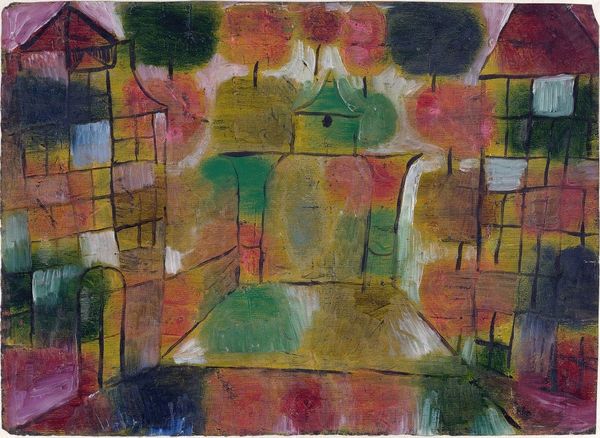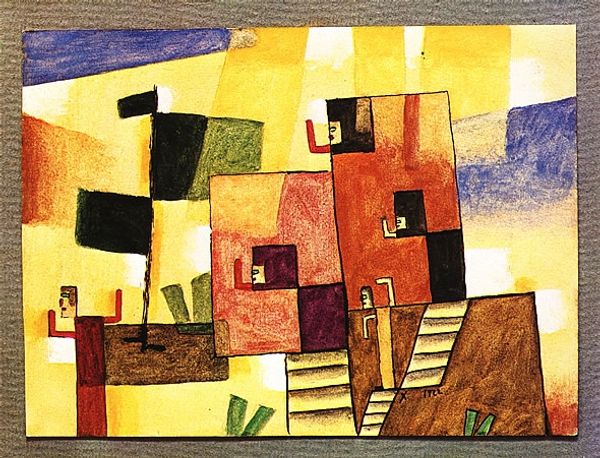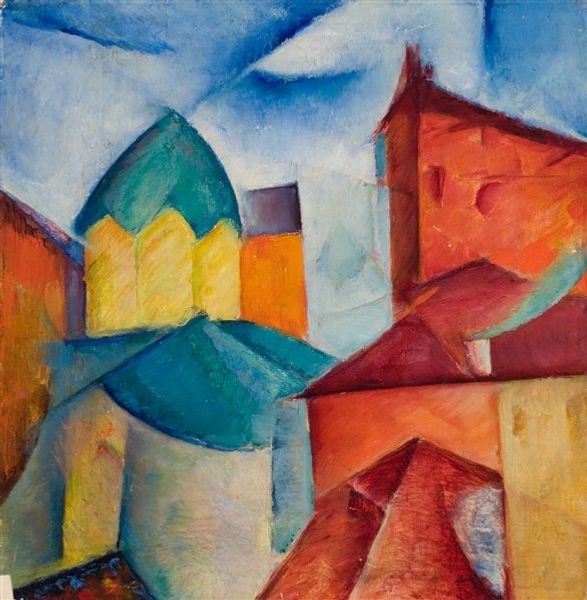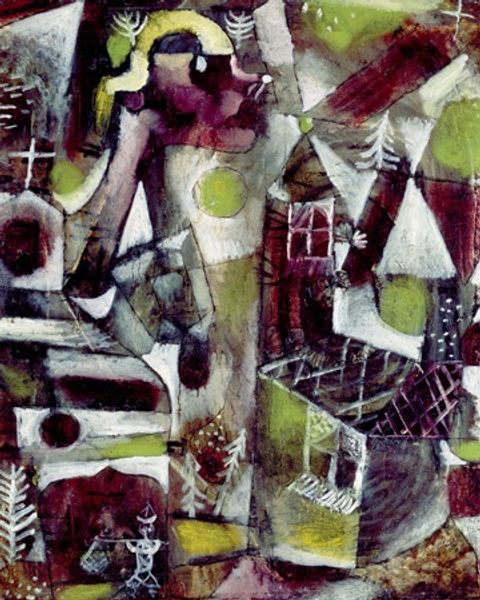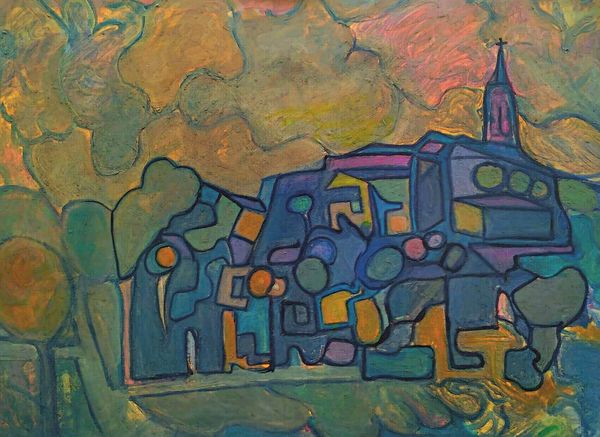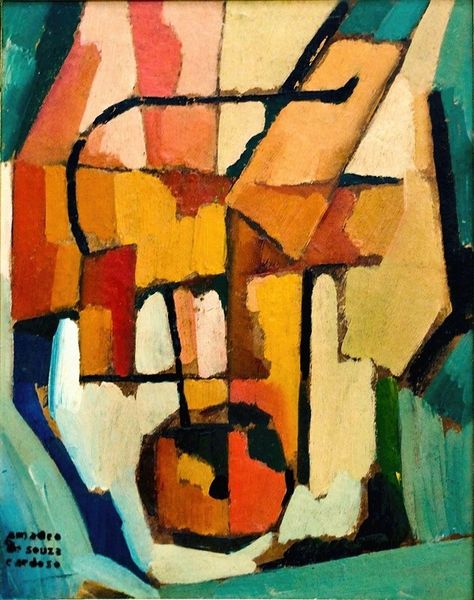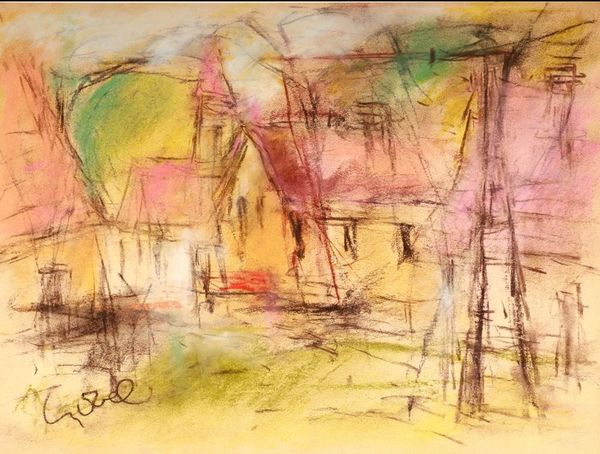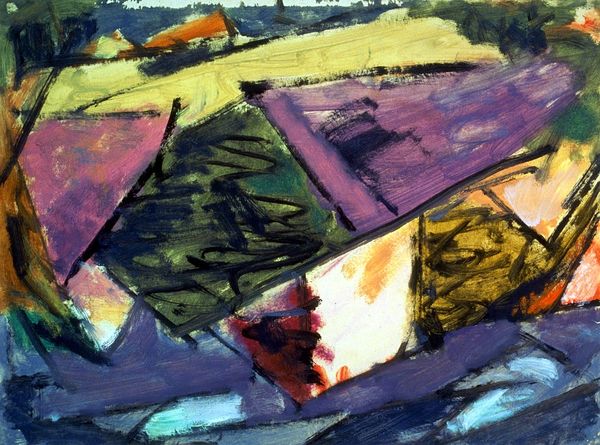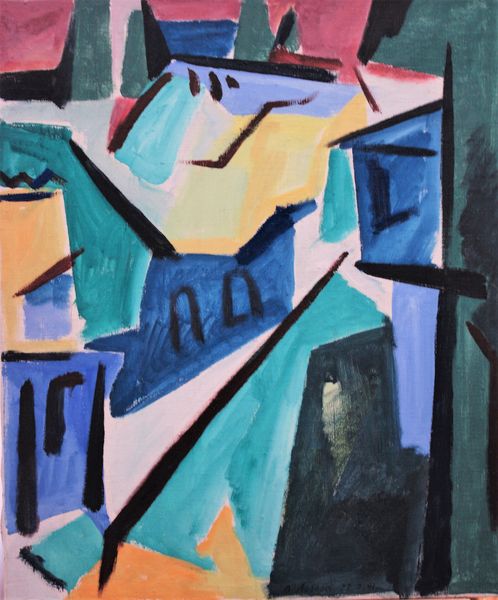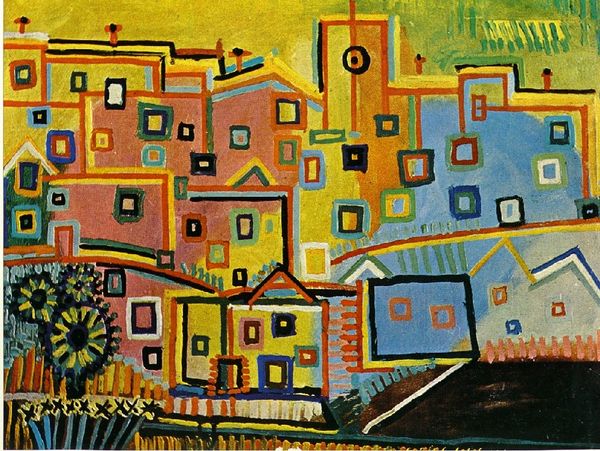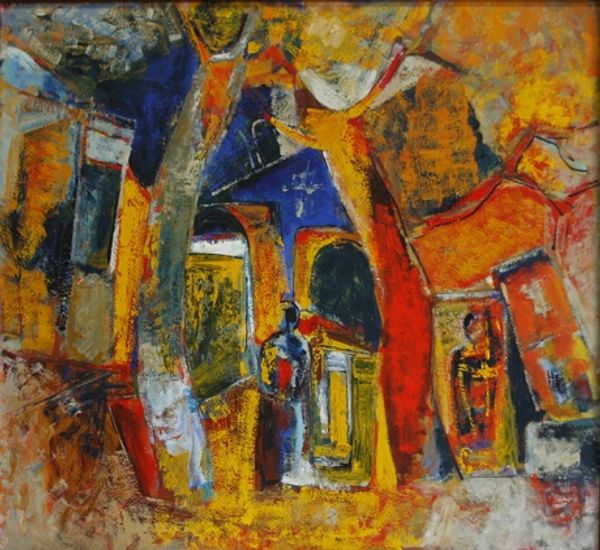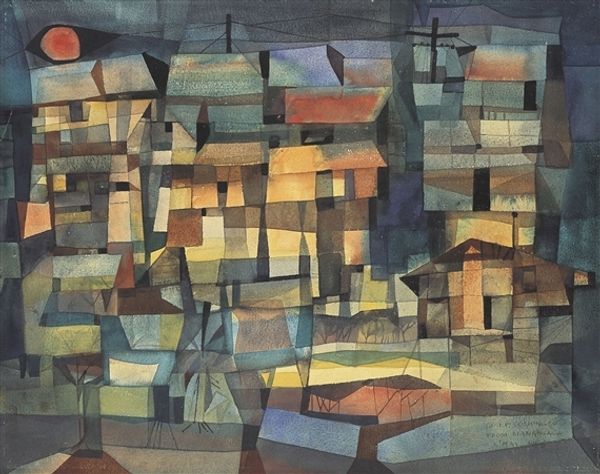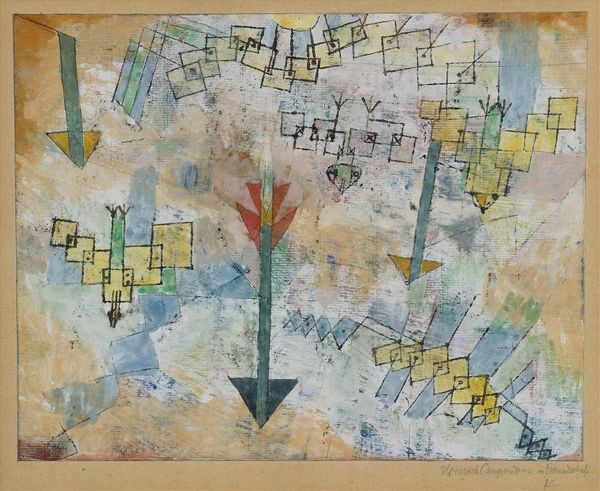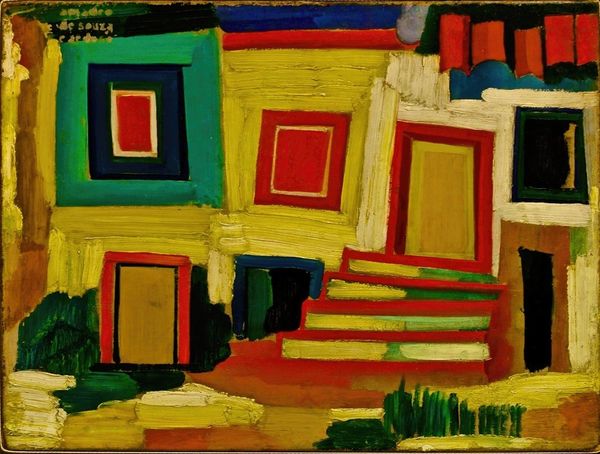
mixed-media, painting
#
cubism
#
mixed-media
#
art-nouveau
#
abstract painting
#
painting
#
abstract
#
form
#
geometric
#
expressionism
#
cityscape
#
modernism
Copyright: Public Domain: Artvee
Curator: Here we have Paul Klee's "Façade Brown-Green," a mixed-media painting from 1919. It’s a fascinating piece of early Modernism. Editor: It’s striking. At first glance, it's a bit melancholic, perhaps? The subdued tones and the slightly distorted perspective give it a sense of unease. Curator: The architectural forms are clearly present, wouldn't you say? The composition adheres to the cubist visual language that seeks to present multiple viewpoints in two dimensions. We see facades and receding planes that, when combined, construct a whimsical space. Editor: Definitely, but beyond form, it suggests a narrative. Looking at it in 1919, the aftermath of World War I looms large. Are these fractured facades meant to represent a society and architecture torn apart by conflict, expressing loss? The brown and green feel particularly significant in that context. Curator: Brown and green create visual harmony and formal balance within the picture plane. It is intriguing how the materiality contrasts against the formal language to reveal his exploration of these painterly values. Editor: It is not only about this. Klee was Swiss, but Germany underwent a period of significant cultural and political upheaval during and after the war. Perhaps this work acts as commentary on how national identities are challenged in times of crisis and how such transformation appears through art. Curator: Well, I perceive this more as a concentrated focus on line, color and geometry in pictorial space that evokes certain emotions from a viewer; nothing beyond exploring the essence of form and color relationships in art. Editor: Perhaps… Yet isn't art also inherently reflective of the times, subtly or overtly carrying the burdens and hopes of a society in transition? This may be true when reflecting on Klee's work given his active participation and reflection during wartime. Curator: Indeed, contemplating on that in light of his contribution in Weimar, we might see how even abstraction could indirectly speak to and about the world it inhabits.
Comments
No comments
Be the first to comment and join the conversation on the ultimate creative platform.
